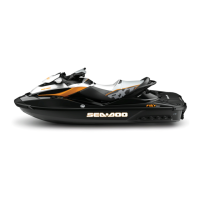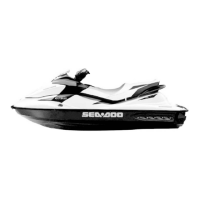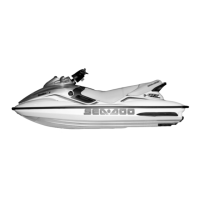Section 04 FUEL SYSTEM
Subsection 01 (INTELLIGENT THROTTLE CONTROL (iTC))
While the throttle lever might be fully depressed
and held, the ECM could close the throttle plate,
instead of opening it, if the iBR lever were de-
pressed. Then, the ECM could open the throttle
plate to accelerate the engine to increase the brak-
ing effect. All those different throttle plate move-
ments could be achieved while the throttle lever
was still fully depressed. This is one of the great
flexibility of the iTC.
The use of the iTC allows these additional engine
modes of operation.
Learning and Rental Keys
Learning and Rental keys limit the watercraft ma-
ximum speed. The full stroke of the throttle lever
is used while only a partial stroke of the throttle
plate is achieved. Therefore, greater throttle lever
movement is used while a smaller engine speed
variation is applied through the throttle actuator.
This permits a more accurate and easier throttle
operation to control the engine within a maximum
speed for a learner.
Cruise Control
Cruise control allows the operator to set a desired
maximum speed of the watercraft when operat-
ing above 3800 RPM.
Cruise control limits watercraft speed but does
not maintain it. The operator must hold the throt-
tle lever depressed to maintain forward speed,
unlike an automotive type cruise control which
maintains a constant speed while throttle pedal
is released.
As the throttle lever is kept fully depressed, the
throttle plate will open and close as necessary to
maintain the maximum set speed.
Slow Speed Mode
Slow speed mode is a function of cruise control
which allows the operator to adjust and set idle
speed corresponding to a watercraft speed of
1.6 km/h to 8 km/h (1 MPH to 5 MPH). The throt-
tle lever should not be depressed while operating
in slow speed mode.
The throttle plate will open and close as necessary
to maintain the set speed.
O.T.A.S.
TM
System (Off-Throttle
Assisted Steering)
The O.T.A.S. (Off-Throttle Assisted Steering)
system provides additional maneuverability in
off-throttle situations. The O.T.A.S. system is
electronically activated and slightly increases
engine speed under a pre- defined RPM when
the driver initiates a full turn. When handlebar is
brought back to its center position, the throttle
reverts to idle.
The throttle plate will open and close as necessary
to assist the steering.
Limitations
The O.T.A.S. system cannot help maintaining con-
trol or prevent collisions in all situations.
PROCEDURES
THROTTLE ACCELERATOR
SENSOR (TAS)
General
The throttle accelerator sensor (TAS) is a double
hall effect sensor that sends a signal to the ECM
which is proportional to the throttle lever angle.
sdd2009-
001-031_a
1. Throttle lever
2. Throttle accelerator sensor (TAS)
First ens
ure the throttle lever works adequately.
Fully dep
ress lever then release it. It must reach
thewideo
pen position and return to the idle po-
sition f
reely when released. Otherwise, refer to
STEERIN
G SYSTEM
for an inspection.
TAS Voltage Test
Check th
e voltage of the throttle accelerator sen-
sor as fo
llows.
Lift suspension using the iS up button to gain ac-
cess.
NOTE: If more height is required or if the iS can-
not be used, manually lift suspension by the an-
chor points close to handlebar and safely lock in
this position. Do not lift the watercraft from the
anchor points.
From un
der the moving deck steering area, dis-
connec
t the 8-pin and the 12-pin connectors.
214 smr2009-050
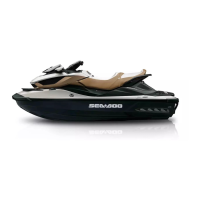
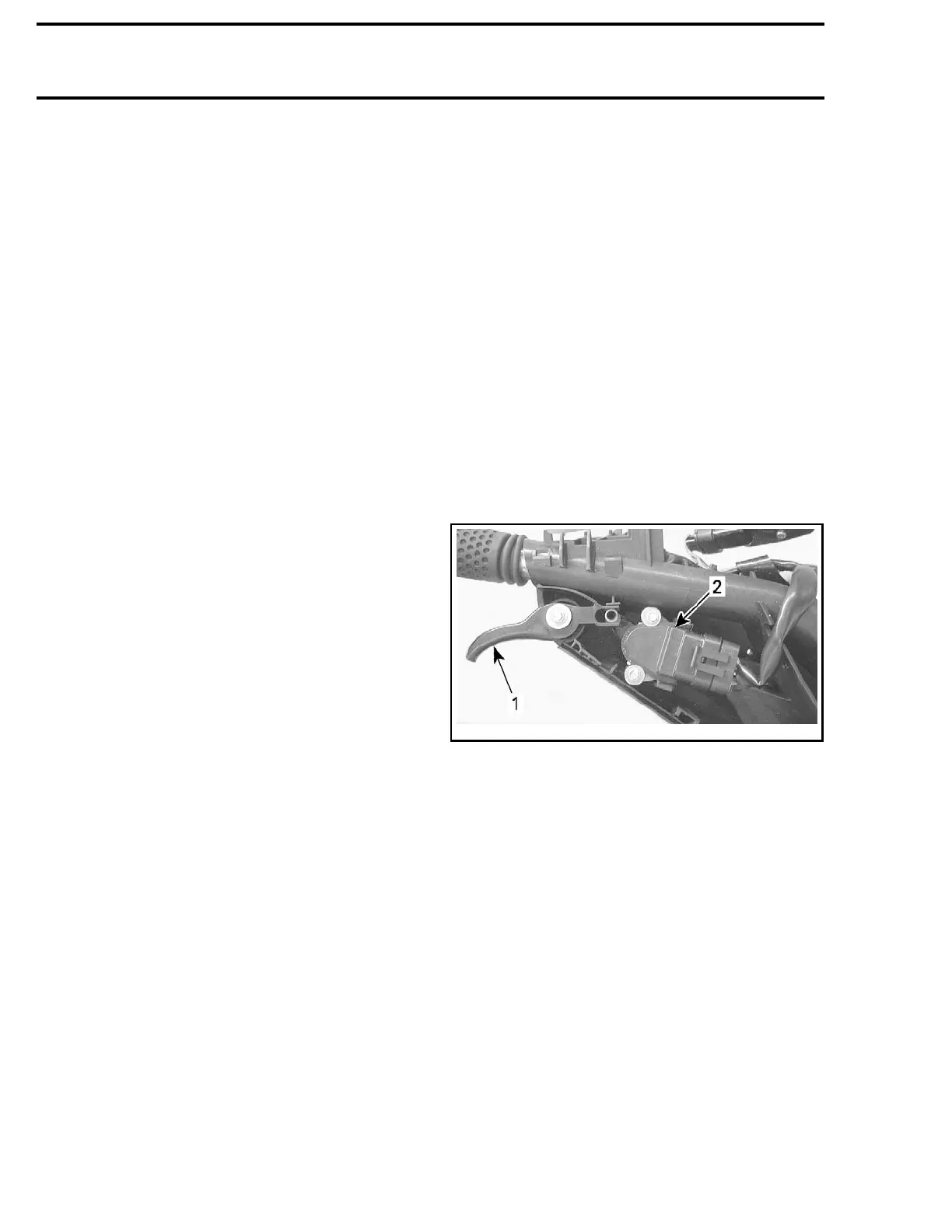